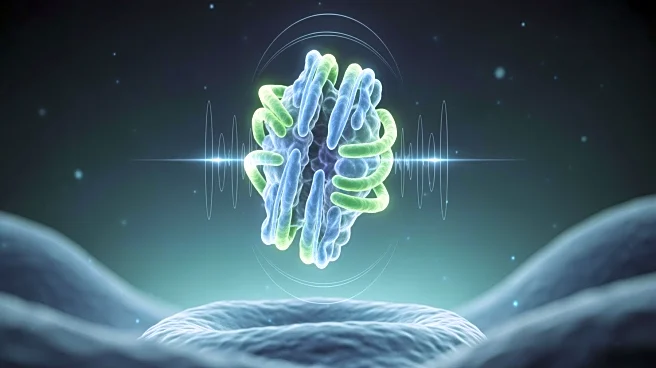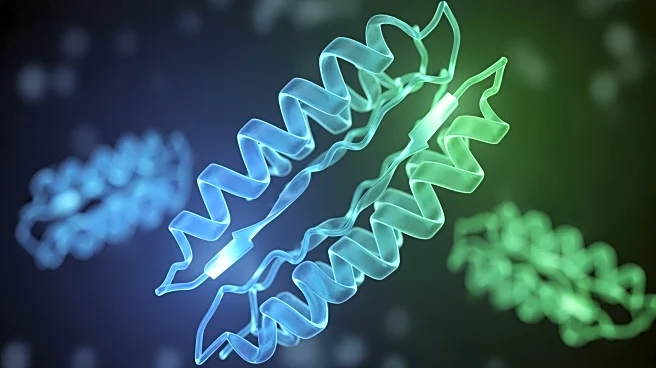What's Happening?
Researchers from Johns Hopkins and Ludwig-Maximilians-University Munich have published detailed 3D structural insights into the ZAK protein, a key player in cellular stress response. The study reveals
molecular details down to the atomic level, providing a clearer understanding of how ZAK regulates stress responses to agents like UV irradiation. This breakthrough sets the stage for developing targeted treatments that could manipulate this signaling network. The research, supported by the National Science Foundation and National Institutes of Health, marks a significant step in understanding the protein's activation mechanism and its interaction with ribosomes during cellular stress.
Why It's Important?
The discovery of ZAK's structure is pivotal for advancing drug development targeting cellular stress responses. Understanding the protein's interaction with ribosomes can lead to more precise treatments for conditions caused by cellular stress, such as cancer and neurodegenerative diseases. This research enhances the scientific community's ability to design drugs that specifically target ZAK, potentially reducing side effects associated with broader kinase inhibitors. The findings could revolutionize therapeutic approaches, offering new hope for patients with diseases linked to cellular stress.
What's Next?
The research team plans to further explore ZAK's structure to gain deeper insights into its activation and function. Future studies will aim to capture more of the protein's structure and understand its role when not bound to ribosomes. These efforts could lead to the development of novel drugs that precisely target ZAK, improving treatment efficacy and safety. Collaboration between institutions will continue to drive this research forward, potentially leading to breakthroughs in managing diseases related to cellular stress.












